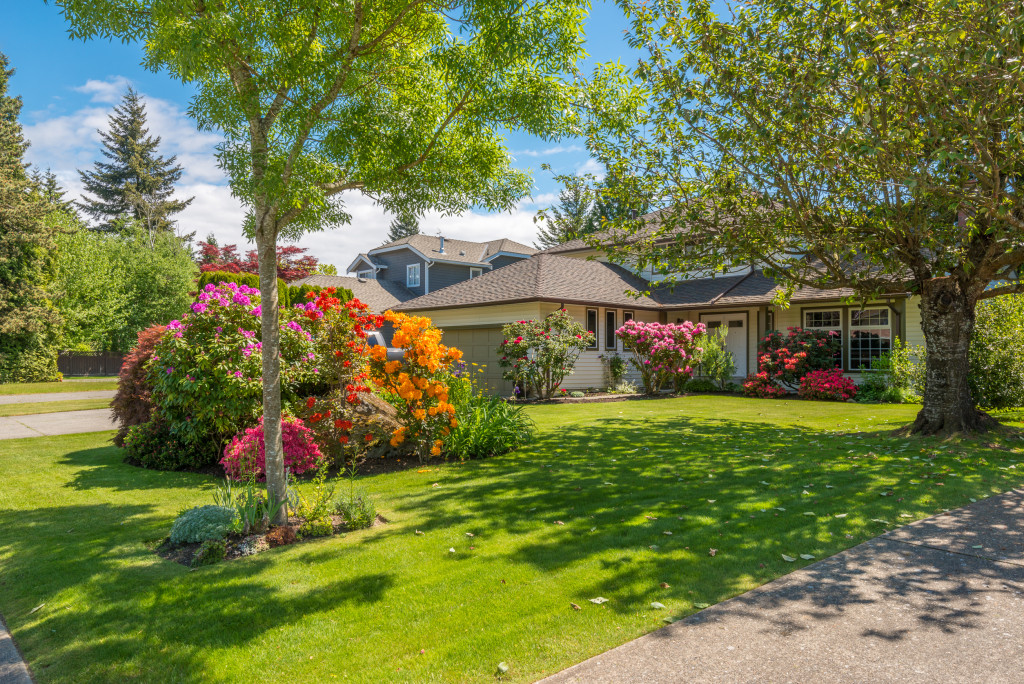What many gardeners, landscapers, and homeowners deal with is how to better the small plot of land that usually sits at the back of a home: the backyard.
It’s so easy to overlook the backyard and let it be, especially when it’s a hidden space. There are no eyes to urge anyone to mow the grass or trim the topiaries. If all efforts are put towards improving the front yard’s landscape (especially for the sake of curb appeal), we might as well include the backyard. Although it’s a private space, it holds the potential to be more than just that. It can be a place of relaxation. Beautified spaces aren’t just good for the eyes but good for the well-being too.
One underestimated feature of any landscape design plan is garden edgings. They’re a simple, effective, and creative way to separate two spaces. Early records refer to edgings as materials put around the outside edges of beds or along pathways and avenues. Edgings give personality and variety in a landscape design plan, with a playful touch to an otherwise green plain.
Choosing Garden Edgings
The great thing about edgings is that they can suit anybody’s budget and style. When deciding which materials to use, consult the design plan. Would it fit the theme and the budget? How willing are you to spend on maintenance? How big is the garden? Which sections should have edgings installed?
Materials used for garden edging can be wood, bricks, iron, stones, and more. Others even go as far as using recycled materials like old rubber tires and plastic bottles. If it works, why not?
Before deciding what you want to install, review the other types of edgings that look beautiful in a garden.
Bricks and Stones
Archaeological records show that “brickbats” were used to separate a garden bed. Essentially, these are broken bricks lined one after the other for this purpose. But whole ones do the trick too. Bricks aren’t just easy to obtain; they’re great at their job too. They guard unruly plants against growing in areas they shouldn’t. When installing them, it’s not that hard either. Although it’s still hard work, it’s not entirely impossible to DIY.
Just like bricks, stones are accessible and DIY-able too. Stones have a great potential to be aesthetic yet functional. However, a downside to this is that it doesn’t do an excellent job at controlling grass growth unless the stones are mortared together.
A couple of other types that fall under this category are curbstones and mowing strips (embedded into the ground to separate two areas).
Cement
Unlike stones and bricks, this requires professional help upon installation. They’re lasting and trustworthy, which is what everybody wants from edgings, but because of their permanence, redesigning or renovating in the future could mean a little more work to be done.
Ironwork
Because of the industrial revolution, iron and metals became more accessible to the middle class, hence the rise of ornamental ironwork in the early 19th century. Ironwork is still used today for edging today, among other things. However, its intricate and pretty features can be pricey in material and installation unless the cost was already accounted for in the landscaping plan.
Wood

Nothing beats good ol’ trusted wood.
This beautiful material can be shaped and arranged any way and installed using different methods. They’re affordable, long-lasting, and compliment wooden fences well! But because this edging is made of wood material, they will eventually rot. There are types of wood that are resistant to rot, such as redwood and cedar, but they can be pricey.
To install wood edgings, flatten the ground first. Since the material is solid, placement is easy in that regard. When turning corners, play with angles or arrange the square ends of each piece to make a 90-degree angle.
Extra Tips for the Layout
To make the most of the space, here are some other suggestions worth adding to the landscape design.
Go For a Multi-use Space
A beautiful backyard shouldn’t be just for the eyes. It’s best if it provides space for recreational use too. Consider options like lounging areas, outdoor storage, pet areas, wildlife attractions into the landscape plan.
Add These to Your Layout Checklist
In laying out placements for edgings on the landscape, there are factors worth considering. These are the sun’s patterns, shaded/unshaded areas, windy areas, soil conditions, erosion-prone areas, water drainage routes, and slope of the property.
The backyard is worth making an effort to beautify because it serves as a secret haven for resting or a nearby getaway with family and friends. With the right tools and proper planning, it can become a beautiful resting place everybody wishes they had in their own backyard.




